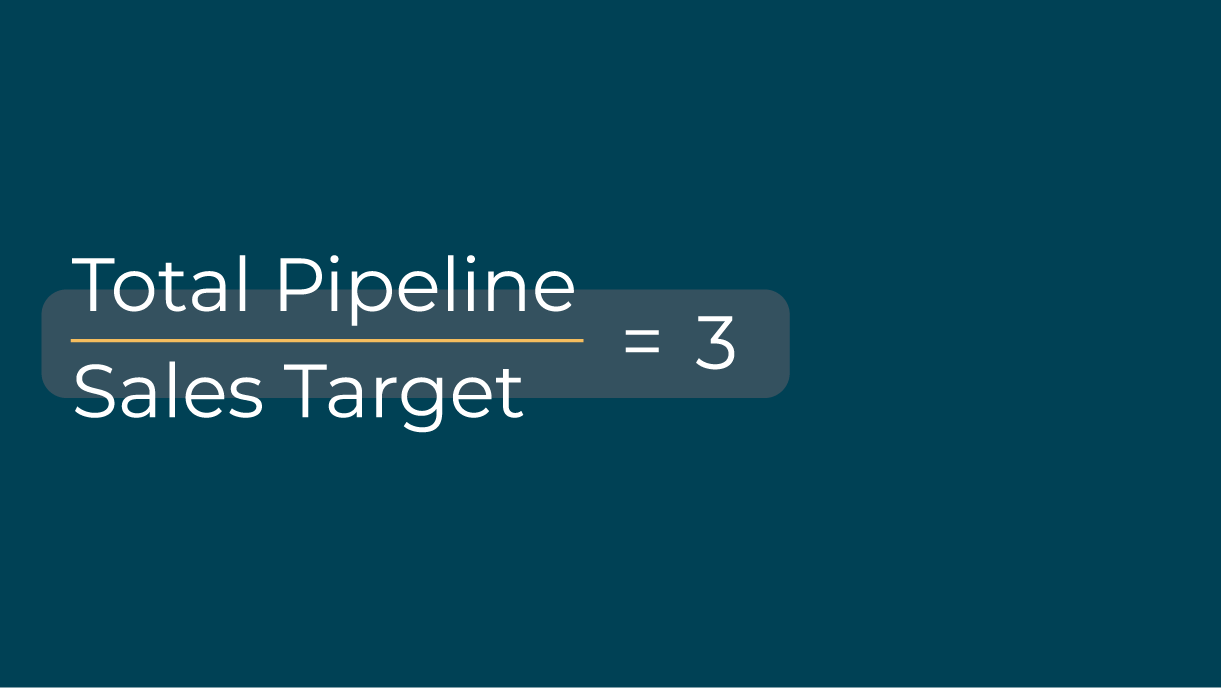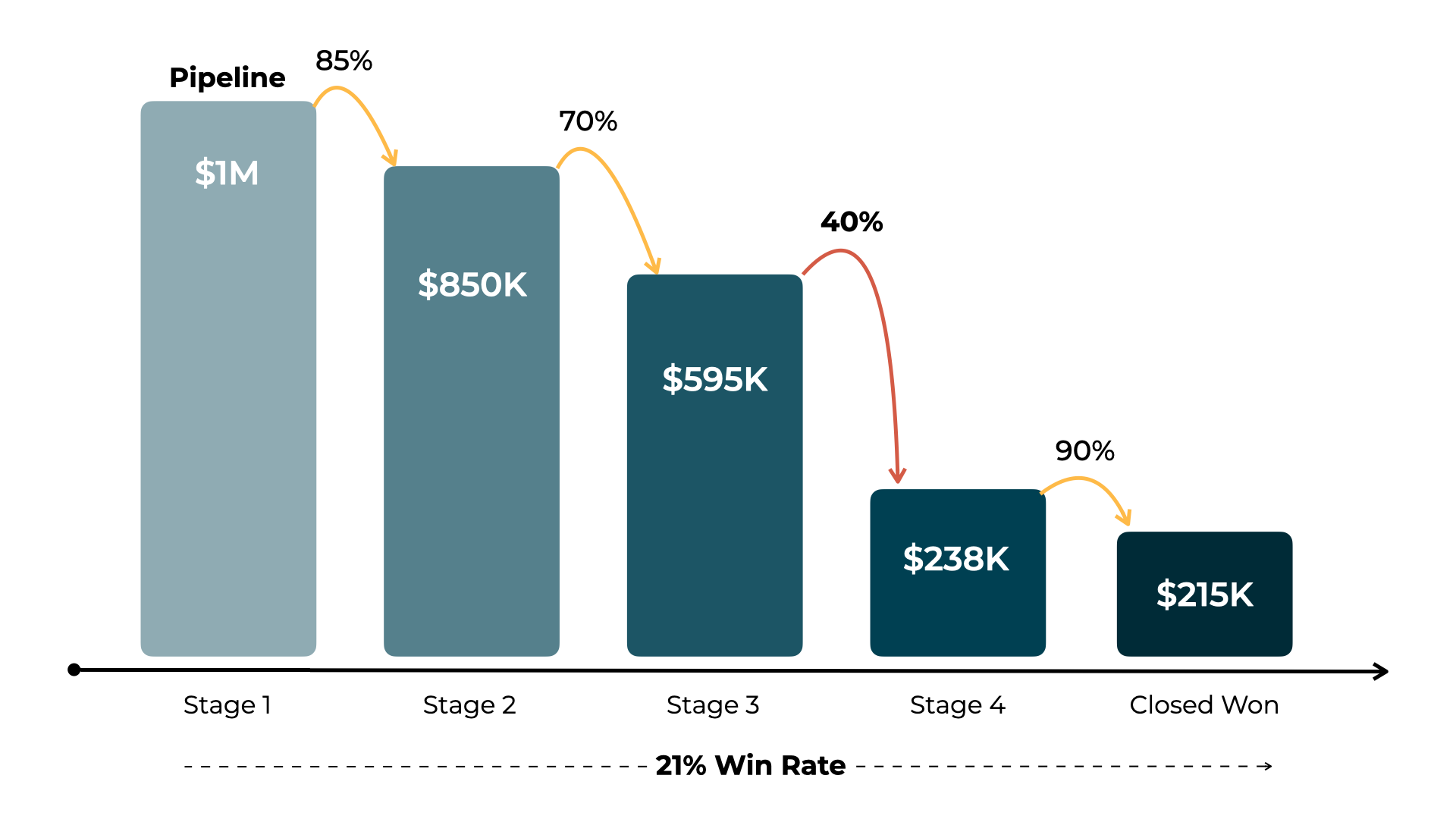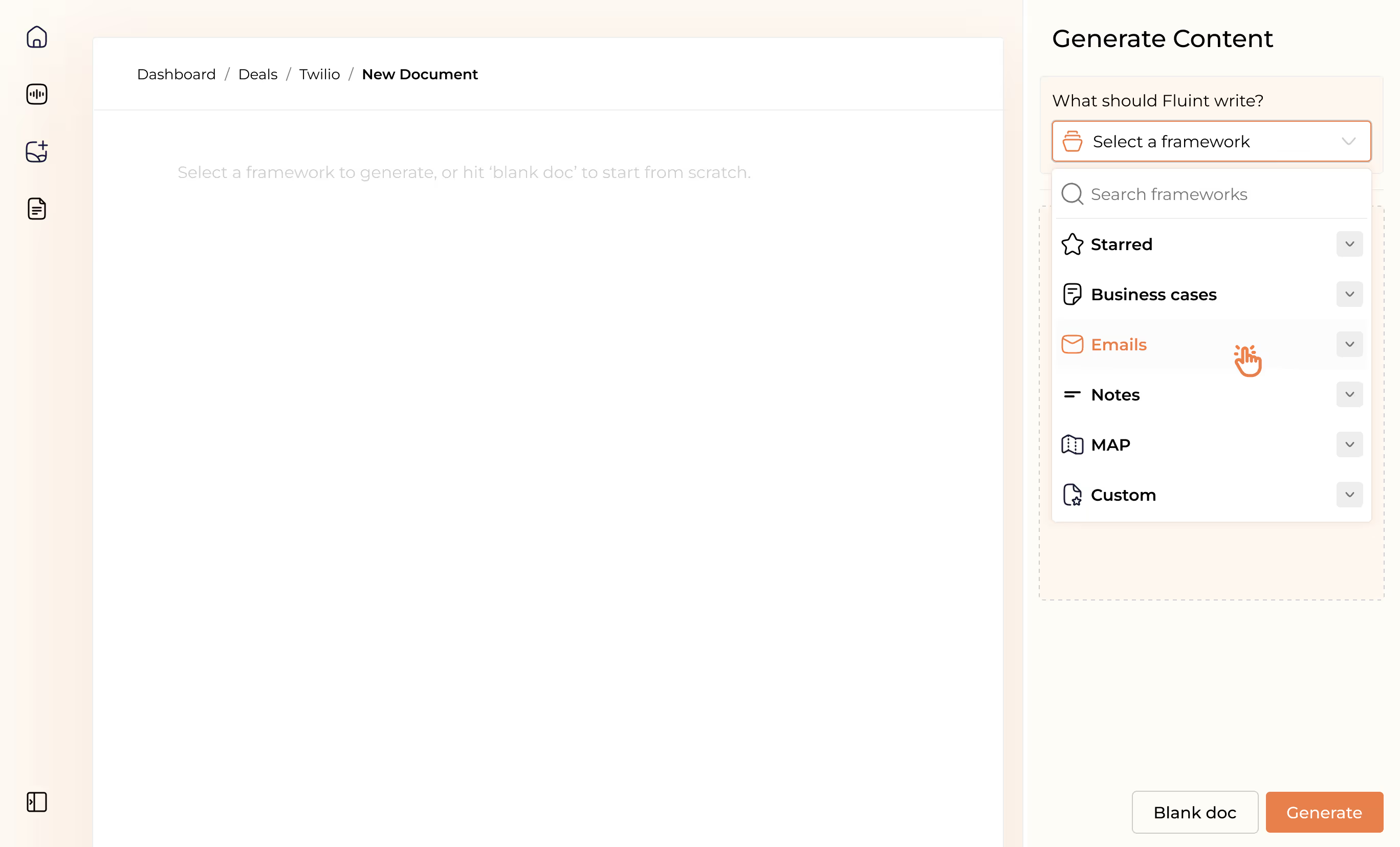How and Why to Ditch the "3X Pipeline Coverage" Rule


It's wild how many sales teams still rely on the old “3X pipeline coverage” rule of thumb.
Even though reps building a 3-4X pipeline coverage and missing quota happens more frequently than a Taylor Swift concert selling out.
On the flipside, there's a another type of team who manages to plan through a deep understanding of weighted pipeline — and the relationship between pipeline coverage and close rate, across each stage of the process.
Are you that type of team?
Well, if this write-up feels a little bit too "101-level" for you, you're probably "Type 2."
But, this is also one of those topics that sales leaders know, but don't go nearly deep enough in doing something about it.
The Two Types of Sales Teams
At the risk of oversimplifying things, there are two types of sales teams out there:
- Type 1: Wins by “volume.”
Close rates are chronically hovering ~20%, so leadership’s always hammering prospecting to make sure reps "get after it," always feeling they don't have enough pipeline coverage.
- Type 2: Wins by “rate.”
These teams break down their process stage by stage. Leaning into the stages with the biggest leakage, by rolling out targeted programming to win more — with less pipe.
The 1st type of team wins by force. The 2nd wins with finesse.
Making the Shift from Type 1 to 2
I’m going to simplify a scenario from an HR tech company we work with.
The typical AE on the team:
- Built roughly $1M in quarterly pipeline, vs. a target of $250K.
- Which is typically seen as a "good" 4:1 ratio.
- But really, they leaked a massive amount of revenue between Stages 3 & 4.
- The ~40% Stage 3 → 4 rate cut their overall win rate to 21%
Which looked something like this:

Keeping $215K of the $1M in pipeline the team already spent good time and money to create is a hard (and expensive) way to win.
But the good news is they made this shift to a “Type 2" team earlier this year.
What type of team are you?
As a quick aside, here’s how you’ll know which type of team you’re building.
Mid-quarter, you’ll either hear:
Type 1:
“Can you pull a few of those deals forward?”
“Why aren’t we sourcing 15 opps, minimum?”
“Can you get them back with a bigger offer?”
And my personal favorite…
“Setup the meeting, I’ll handle this one.”
Type 2:
“What’s happening in the buying team at S3?”
“Can we navigate it with them upstream, at S2?”
“What process / skill gap will that mean closing?”
Okay, back to our example.
Now, in this case, deals would stall when the HR team got excited, their demos went flawlessly, they were multithreaded, quantified “pain,” etc…
But then? Nada.
Total silence.
So they'd start their quarter feeling confident. They'd invested heavily in pipegen. And yet, they were still finishing ~15% short of their targets.
Spread across 15 new business reps? That gap started to add up pretty quickly.
So what was the issue?
Their deals would get de-prioritized by Finance & Ops mid-funnnel.
Which meant their sellers needed to start engaging the COO — not just the CHRO — earlier in the cycle.
So how'd they approach it?
By crafting messaging that tapped into corporate initiatives and a high-level priority.
How, exactly, did that work?
There were a few steps — which all started by recognizing only a fraction of deals had any account-specific business case in place. Because their process wasn't setup to fill that gap.
Together, we focused on:
- Enabling reps to build a sharp point-of-view.
- Writing out that POV in an executive summary.
- Sales leaders coaching to this in 1:1's with a scorecard.
- RevOps tying exit criteria to Ops & Finance validating their document.
Which meant their approach in S1 → S3 completely changed, to solve the S3 → S4 gap.
Reps learned a new approach, leaders switched uphow they ran deal reviews, and win rates jumped (up to 28% overall).
While this did slow down their time to go from S1 → S3, it also cut S3 → S5 by 10 days.
And their reps loved it.
Because even with less pipe, they were delivering more revenue.
Questions for you to consider here.
- What sounds more like your team? Type 1, or 2?
- If you're a "Type 2" team, where's your process breaking down?
- What, specifically, are you planning to address that this week?
If you need an extra resource to help with that last point, check out the full Sales Process 2.0 Playbook for a few ideas:

FAQ's on:
Why stop now?
You’re on a roll. Keep reading related write-up’s:
Draft with one click, go from DIY, to done-with-you AI
Get an executive-ready business case in seconds, built with your buyer's words and our AI.

Meet the sellers simplifying complex deals
Loved by top performers from 500+ companies with over $250M in closed-won revenue, across 19,900 deals managed with Fluint

Now getting more call transcripts into the tool so I can do more of that 1-click goodness.



The buying team literally skipped entire steps in the decision process after seeing our champion lay out the value for them.


Which is what Fluint lets me do: enable my champions, by making it easy for them to sell what matters to them and impacts their role.








